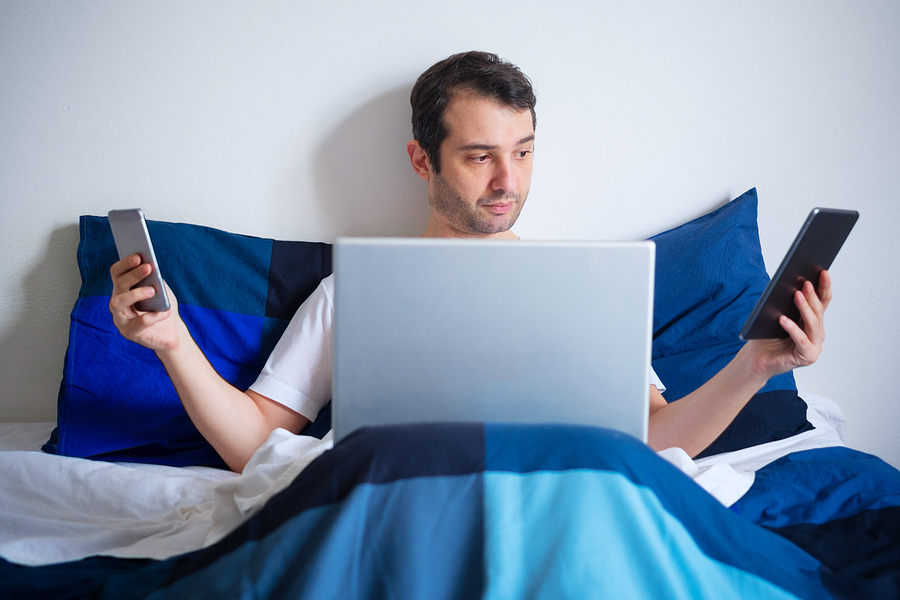Children, teenagers and adults, we are all under the spell of technology and suffer every setback… especially when it comes time to go to sleep. So if you are unable to make – or follow – the wise resolution to turn off your screens some time before you go to bed, you can opt for gadgets or connected tools that could improve the quality of your sleep.
Front face of technology
It’s a long time since there was a book that sat on the bedside table. Now there are smartphones, iPads, iPods which accompany you before you drift off to sleep. So you take a nasty dose of blue light before falling asleep… or rather trying to fall asleep. And yes, this very energetic light prevents you from putting yourself in “sleep” mode, since the synchronization of your waking and sleep cycles – which are established by natural light – is disturbed. And the vicious circle begins (dependence on screens, excitation due to the light, disturbed sleep cycle) for close to 90% of us. Indeed, an American study reveals that 90% of teenagers and adults (13 to 64 years old) are in front of their screen before going to bed. And that’s not counting the 10% who admit to waking up in the middle of the night because of an email, a call or a text. In short, since sleep is health, you understand that something must be done, because we are not all like Napoleon, for whom four hours of sleep was enough. Fortunately, you can count on technology to find solutions to the problems of sleep and nights that are too short.
Flip side of technology
It did not take long for manufacturers to take up the problem and offer a technology-driven population solutions for every taste: “white noise” headphones that invite you to concentrate on a sound while being abstracted from surrounding nuisances; dawn simulators that emit a light that reproduces sunrise or sunset to help you fall asleep or wake up. Alongside these gadgets, connected products have been developed that get you there in another dimension: analysis of your sleep cycle, heart rate, breathing cycle; recording your nocturnal movements and noise nuisances; waking up at the right time (light sleep) within a time range specified on your smartphone; study of the room’s environment (heat, humidity, noise…); sending stimuli to prolong phases of deep sleep… All this beautiful technology is found in headphones, bracelets, lamps and connected bands and deliver you, in the morning, graphs and diagrams showing you in every detail how your night went. If you don’t have a smart phone, rest assured – this technology, when directly installed under the mattress, provides the same results.
If you have reached the end of this article, you already are aware of the need to have quality sleep. With this first step, you won’t have any bad conscience to make use of connected tools that will let you have a healthy night’s sleep. Then you might perhaps step away from it because, really, why would you ask a machine to learn all about you?
